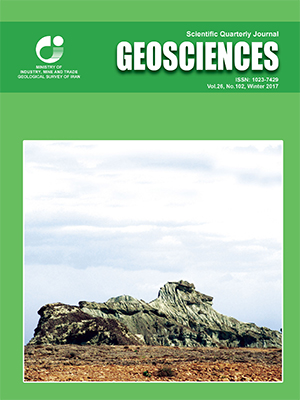Document Type : Original Research Paper
Authors
1 Ph.D., Department of Geology, Faculty of Earth Sciences, Shahid Beheshti University, Tehran, Iran
2 Associate Professor, Department of Geology, Faculty of Earth Sciences, Shahid Beheshti University, Tehran, Iran
3 Assistent Professor, Department of Geology, Faculty of Earth Sciences, Damghan Uuiversity, Damghan, Iran
Abstract
Intrusive rocks from SW Salmas include mafic-intermediate and acidic rocks, which occur in the border of Sanandaj-Sirjan and Urmia-Dokhtar zones in Northwest of Iran. The mafic-intermediate rocks comprise metadiorite and metagabbros that are the oldest rocks in the region. The acidic rocks include metagranite and metagranodiorite. These rocks have intruded into the Precambrian metamorphosed volcanic-sedimentary rocks. U-Pb zircon dating of the Salmas metagranite and metagranodiric rocks yielded age ranges of 565±2/7 Ma to 567±2/4 Ma (Ediacaran-Early Cambrian). Zircons have inherited cores. Zircon Hf isotope data (and Hf model ages) indicate that these rocks are not juvenile mantle melt derived but instead are products of juvenile melts interaction with old Mesoproterozoic continental crust. Furthermore, zircon δ18O values suggest contribution of continental crustal rocks during generation of the Salmas rocks. The Salmas Cadomian rocks are coeval with other similar-aged metagranites and gneisses from Central Iran, Sanandaj-Sirjan zone and Alborz Mountains. All these dispersed basement rocks are suggested to be fragments of the Neoproterozoic-early Cambrian magmatism of northern margin of Gondwana.
Keywords

